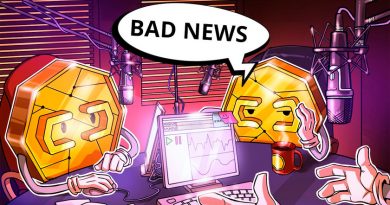Crypto Synthetic Assets, Explained
Cryptocurrency-collateralized synthetic currency models can have enormous implications in the traditional finance industry.
Why are crypto synthetic assets a big deal?
Cryptocurrency-collateralized synthetic currency models powered by smart contracts can have enormous implications in the traditional finance industry. In their essence, these models offer cryptocurrency holders the leverage to trade traditional assets as well as their derivatives while remaining in the digital ecosystem.
Decentralization grants open-access to a global community of investors. Before products such as Abra, Synthetix and UMA became available, only a select few institutional investors could access the global derivatives market. Now, anyone with a smartphone and an intermediate understanding of the synthetic asset underworkings can access these powerful investment vehicles.
With cryptocurrency synthetic asset platforms opening the doors to derivatives for thousands of new investors, only time will tell what kind of impact a potential flood of new cryptocurrency-collateralized derivative contracts will have on the traditional financial landscape.
What kinds of crypto synthetic assets are there?
Abra is a decentralized investment platform that allows users to use their cryptocurrency as collateral to create synthetic assets. Abra’s synthetic asset model leverages smart contracts enabled with Bitcoin (BTC) and Litecoin (LTC).
In practice, if an investor wanted to buy Google stocks worth $1,000 through Abra, the firm would peg $1,000 of the user’s BTC against the price of Google’s stock. If Google goes up or down, the equivalent amount of BTC will be added or subtracted from the user’s contract.
In the above example, the investor would essentially be taking a short position on BTC while taking a long position on Google, the hedged asset. Meanwhile, Abra would take a long position on BTC while shorting Google.
Synthetix is an Ethereum-based platform that allows investors to mint and trade synthetic cryptocurrency on its peer-to-peer platform. This enables users to gain access to synthetic products that simultaneously give them exposure to non-cryptocurrency assets such as gold, USD and stocks. There is currently more than $69 million locked in synthetic derivative contracts.
Synthetix currently has three decentralized apps: the Synthetic exchange, Mintr — which enables users to stake the platform’s native SNX token so they can earn fees and mint Synths — and a Dashboard that presents an overview of the entire Synthetix Network. The Synthetix team has built a multi-tier issuance platform, an exchange and a type of collateral, creating a market for cryptocurrency-backed synthetic assets. Synthetix allows users to issue various synthetic assets, including fiat, derivatives, cryptocurrencies and different asset classes. Examples could be Bitcoin, euro, USD, Tesla stocks, gold, etc.
The user puts collateral, in the form of SNX tokens, in order to create these synthetic assets. Then the user would be able to swap or exchange one synthetic asset for another, repricing the collateral through an oracle without an intermediary.
Universal Market Access is a decentralized platform for financial contracts that utilizes a “provably honest oracle mechanism” and smart contracts to empower users to create their own financial products.
Essentially, UMA users can create financial products, using protocols such as ERC-20 to create tokenized derivatives that grant them exposure to real-world underlying assets similar to how traditional exchange-traded funds function.
What are crypto synthetic assets?
Cryptocurrency-based synthetic assets aim to give users exposure to a variety of different assets without needing to hold the underlying asset. This could be anything from fiat currencies, such as the United States dollar or the Japanese yen, to commodities like gold and silver, as well as index funds or other digital assets.
By using these unique synthetic assets, investors can still hold tokens that track the value of some assets without needing to leave the cryptocurrency ecosystem. Crypto synthetic assets also offer users all the benefits of decentralization, as they are open to all users across borders by using secured smart contracts and other instruments, and the data is stored on distributed ledgers.
What is a synthetic asset?
The term “synthetic asset” refers to a mix of assets that have the same value as another asset. Traditionally, synthetics combine various derivative products — options, futures or swaps — that simulate an underlying asset — stocks, bonds, commodities, indexes, currencies or interest rates.
For example, rather than purchasing a stock, an investment firm may purchase a call option and sell a put option on the same stock. The use of synthetic assets here allows the firm to make use of multiple financial vehicles rather than a single investment asset.
The high-end estimate for the value of all derivative contracts is upwards of $1.2 quadrillion — a number exponentially bigger than global real estate ($217 trillion), the global debt ($215 trillion), global stock markets ($73 trillion) and the world’s supply of gold ($7.7 trillion).
On one hand, derivatives can be used to help take price risk out of a variety of assets like commodities to debt. On the other hand, derivatives can promote and exacerbate market inefficiencies, encouraging a zero-sum game among traders rather than creating true market value. The use of derivative products allows investors to earn returns without a physical settlement, arbitrage trade, transfer risk and hedge against price fluctuations.




